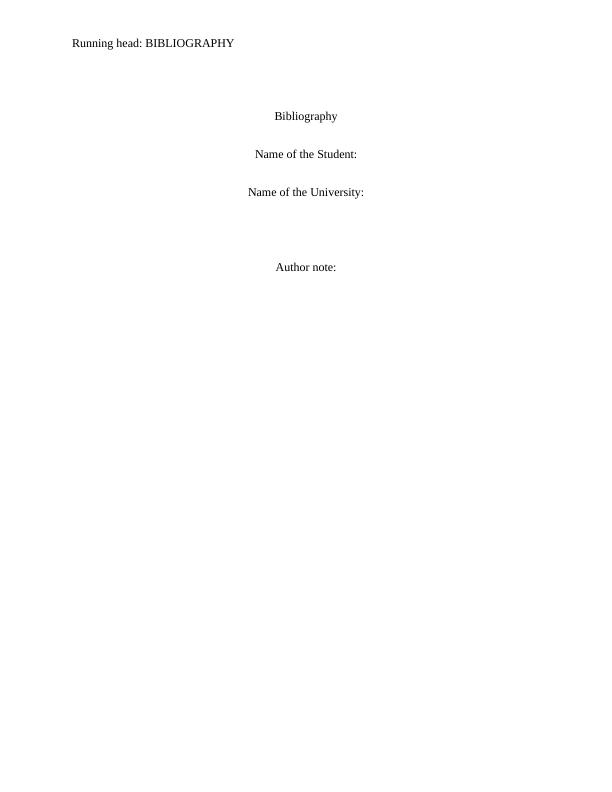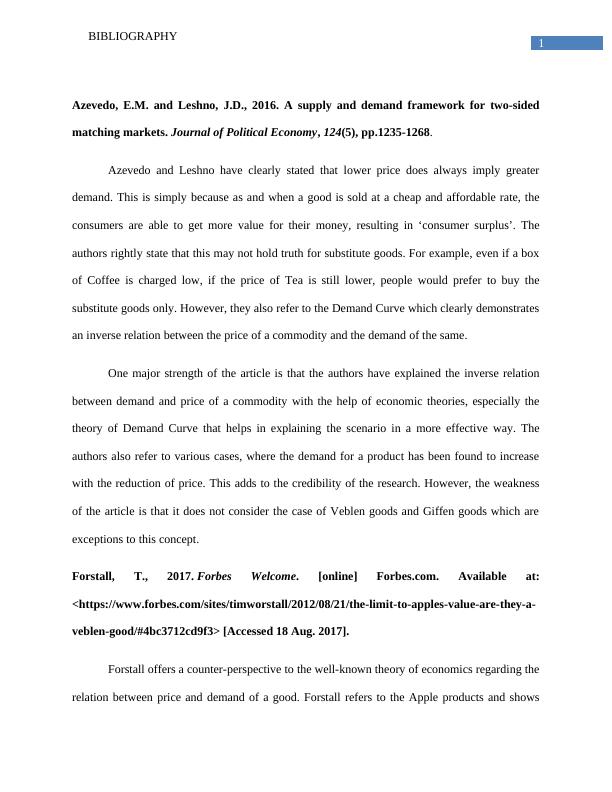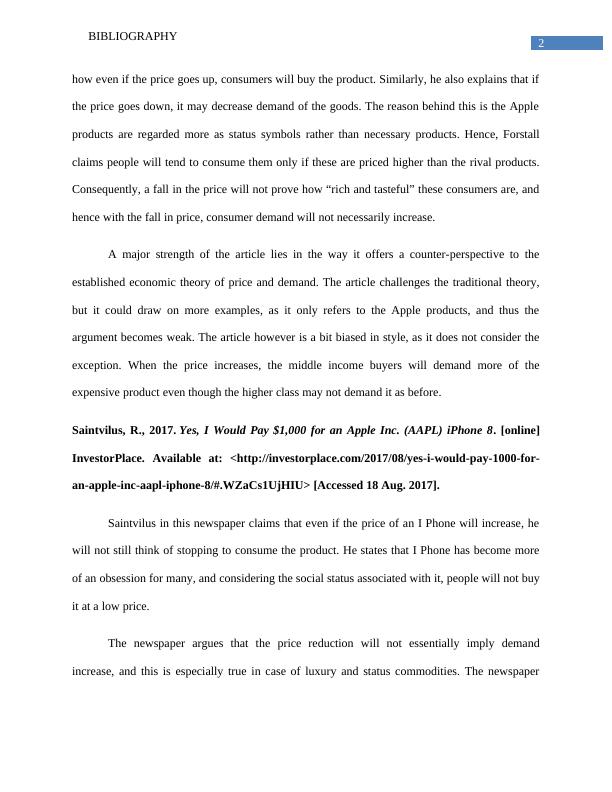Ask a question from expert
BUS100 - Supply and Demand Framework | Bibliography
6 Pages1302 Words284 Views
King's Own Institute (KOI), Australia
BUS100 Professional Communication Skills (BUS100)
Added on 2020-03-04
About This Document
An annotated bibliography is a list of citations(or references) to books, articles, and website pages and documents of the available research on a given topic. The below document discusses the Bibliography with respect to the various types of supply and demand articles.
BUS100 - Supply and Demand Framework | Bibliography
King's Own Institute (KOI), Australia
BUS100 Professional Communication Skills (BUS100)
Added on 2020-03-04
BookmarkShareRelated Documents
End of preview
Want to access all the pages? Upload your documents or become a member.
Theory of Demand and Supply: Exceptions and Analysis
|7
|1054
|298
Increasing Rents in the UK: A Microeconomic Analysis
|11
|1871
|172
Business Economics Assignment - Polo Mint
|12
|3005
|468
Contemporary Business Economics
|8
|1774
|182
BEO1105 Economic Principles Problem Solutions
|15
|1970
|49
Demand and Supply Analysis in Contemporary Business Economics
|11
|3442
|47


